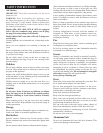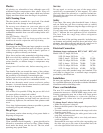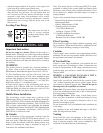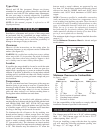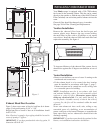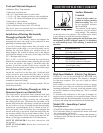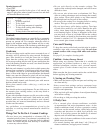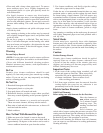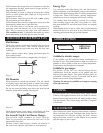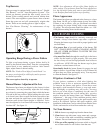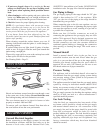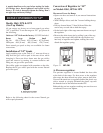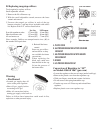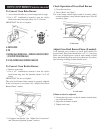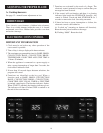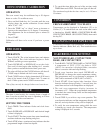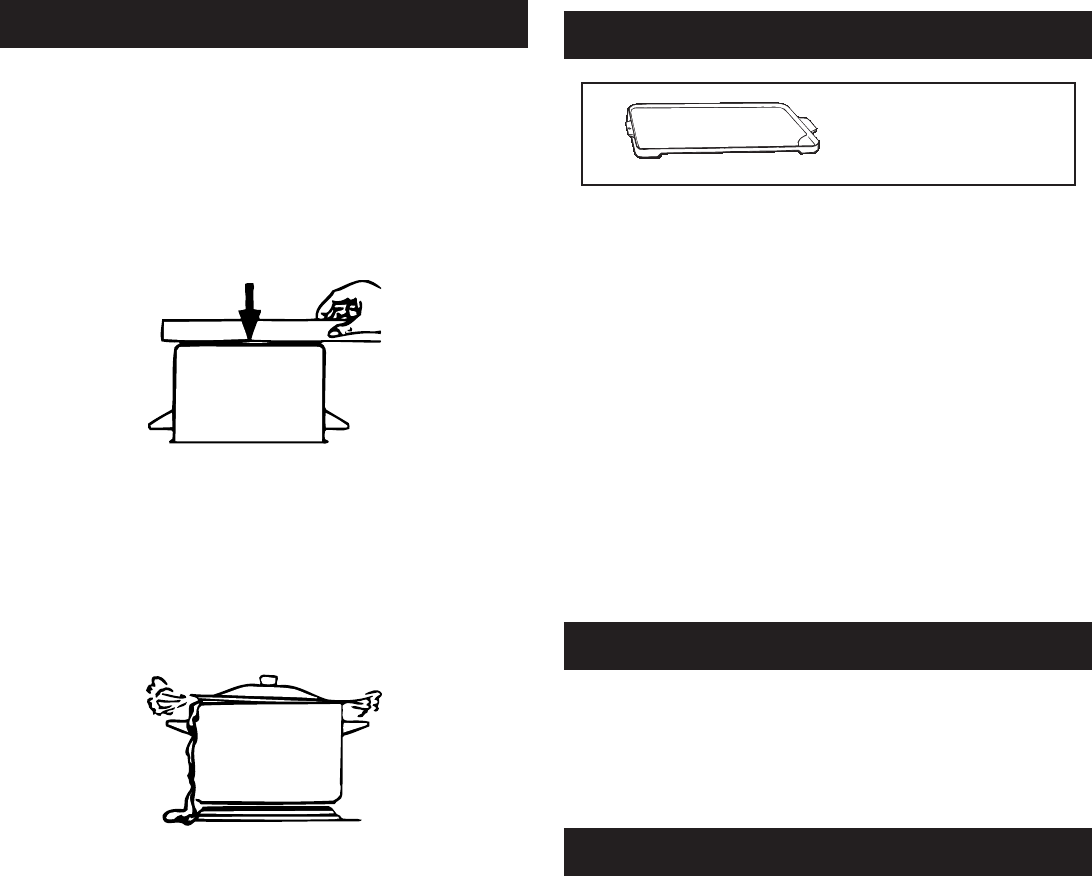
Solid elements take longer than coil elements to reach the
set temperature but they retain heat for longer periods of
time after being turned off.
Solid elements are easier to clean up, because the cooking
surface is sealed against spills. There are no drip bowls or
a burner box to clean.
Solid elements should not glow red even at max setting.
The red lettering will fade with use.
Solid elements have built-in temperature protectors that
automatically reduce heat if a pan boils dry.
You will notice that a cast burner stove top gets hot,
especially when the burners are on for long periods of
time. This is normal for any range with solid elements.
This condition is safe. To minimize heat build up, reduce
burner heat setting to #3 after pot has come to a boil.
SELECTION & USE OF POTS & PANS
Flat Bottoms
Thick, flat bottoms absorb and distribute the heat from
the element more evenly. Thin, uneven bottoms waste
energy and create hot spots that may burn the food onto
cookware.
Glass cooktops require heavy gauge flat bottom pans for
best cooking results.
Check flatness with a ruler or straight edge. See figure 7.
Figure 7
Pot Diameter
Select element to match pan diameter. The pot should
be slightly larger than the element to obtain best energy
usage, and avoid spillovers flowing directly onto element.
Do not use pans extending more than one inch beyond
element, except while canning. See figure 8.
Figure 8
Small diameter pans waste energy and spillage can flow
onto element. This increases chance of fire and burns.
For Smooth Top & Cast Burner Ranges
Use non-stick coated cookware, for easier clean up.
Glass or pyroceram pans should be used only as the
manufacturer describes.
Pressure cookers, deep fat fryers, canners, etc. must be of
the correct size and have flat bottoms to work properly.
Energy Tips
Use cookware with tight-fitting lids, and flat bottoms
which completely cover the heated portion of the element.
Watch foods when bringing them to cooking temperatures
at high heat. When food reaches cooking temperature,
reduce heat to lowest setting that will keep it cooking.
Use residual heat with surface cooking. For example,
when cooking eggs in the shell, bring water to a boil,
then turn element off, and allow heat in water to complete
cooking.
When boiling water for tea or coffee, heat only the amount
needed. Do not use a wire trivet or any other kind of heat
retarding pad between the pan and the element.
GRIDDLE OPTION
OPTIONAL
GRIDDLE
Griddle for electric ranges
To use griddle over the back/front burner combination on
left side of stove. Turn both burners on high for at least five
minutes to allow griddle to heat up to frying temperature.
Temperatures may be adjusted as required.
Griddle for gas ranges
Set griddle on the left over the back/front burner
combination. Lock the notches of the griddle onto the
back & front grate fingers. First make sure that grates are
positioned on burners correctly. Turn both front & back
burners on to correct frying temperature.
Warning: Do not use two griddles on a range as warping
of the top can occur.
CANNING
For best results, use a flat bottom, heavy gauge canner.
Canners with rippled bottoms will not work on electric
burners because the bottom does not make enough contact
with the element. This wastes energy and takes a long time
to boil water.
GAS COOKTOP
Gas cooktops are more forgiving than electric cooktops.
Most cookware will work, although tight fitting lids are
recommended for efficient cooking on both. Always
adjust the burner controls so that flames do not extend
past the edges of pots or pans.
12



